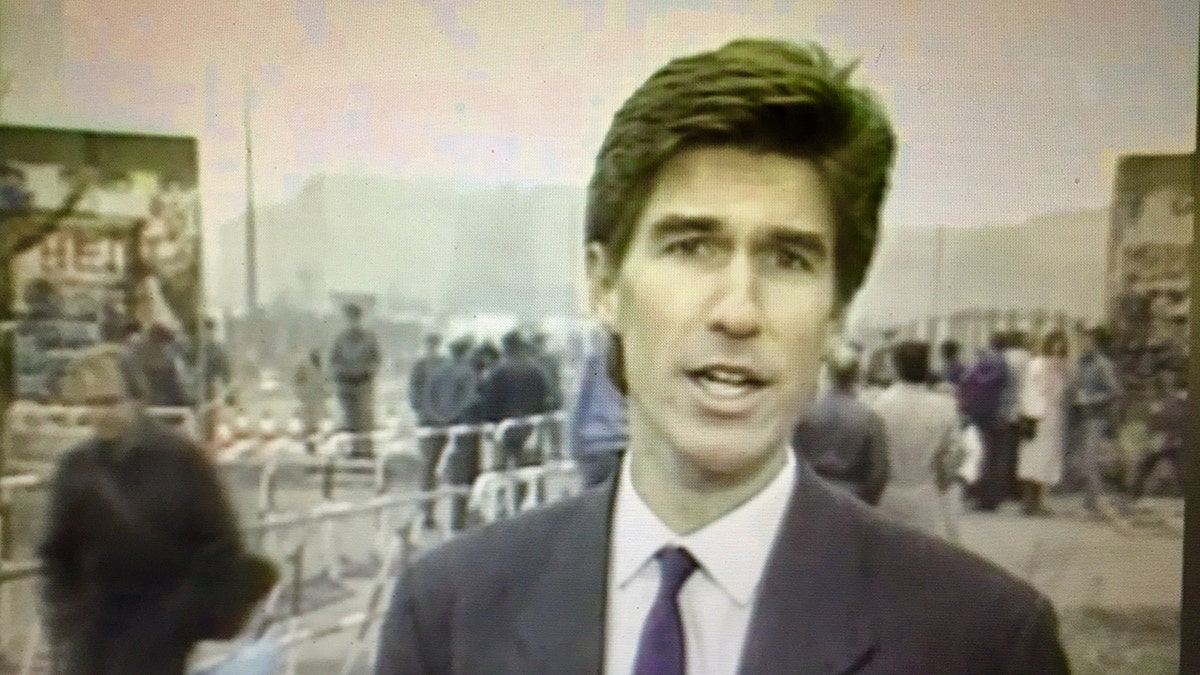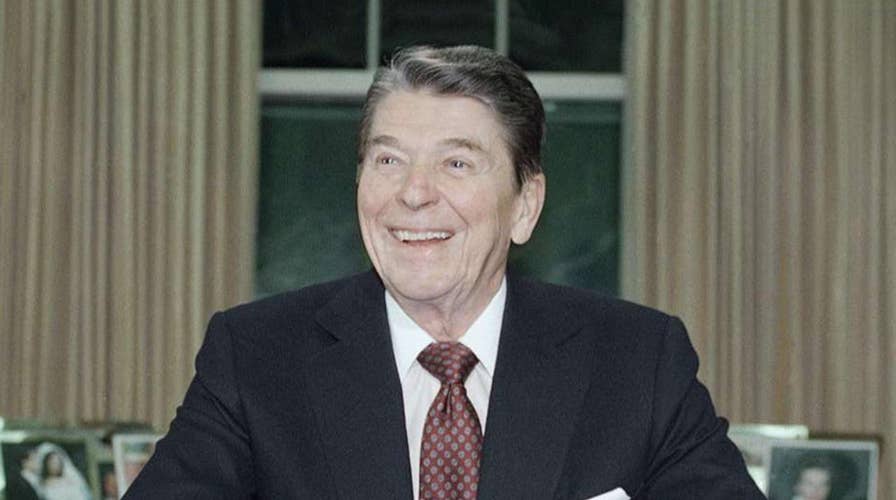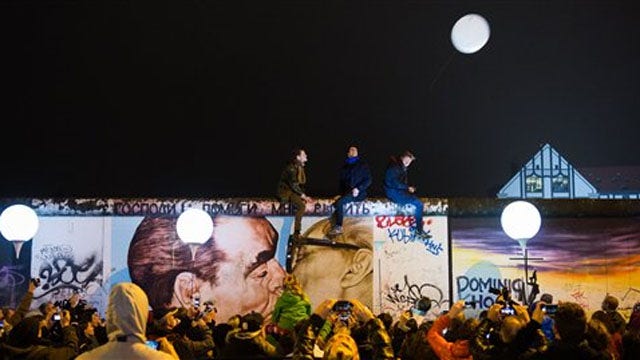Reagan statue to be unveiled at US embassy in Berlin 30 years after fall of wall
A statue of former President Ronald Reagan will be unveiled at the U.S. embassy in Berlin one day ahead of the 30th anniversary of the fall of the Berlin Wall.
I remember it was a cold, gray and wet morning on the first full day the Berlin Wall had come down. I couldn't believe my luck. This huge bit of history was my first foreign assignment as a TV news reporter.

Greg Palkot in Berlin, Germany on Nov. 10, 1989. (Greg Palkot)
More importantly, the thousands pouring through the makeshift opening in the wall in November 1989 couldn't believe their luck either. After decades of oppression by the Soviet Union puppet East German regime, they were free to come and go as they please.
It was cold but the intense warmth of these exuberant people was overwhelming.
"There is so much here," one East Berlin resident told me in amazement.
BERLIN WALL'S FALL TRIGGERS MEMORIES FROM GERMAN NUNS WHO NURSED WOUNDED AFTER ESCAPE ATTEMPTS

Greg Palkot covering the fall of the Berlin Wall on Nov. 9, 1989.
Flash-forward 30 years and it seems like walls are making a “comeback.”
By one estimate, over 600 miles of new barriers have been built in Europe since then — six times the length of the old Berlin Wall, mostly in the last five years.
This time around they're not meant to keep residents of a captive nation in. Instead, they are aimed at keeping out and/or controlling the flow of immigrants, refugees and asylum-seekers coming to Europe from lands wracked with war and economic hardship.

Greg Palkot covering migrants in Roszke, in the Hungary-Serbia border. (Fox News)
PHOTOS: BERLIN WALL SEGMENTS AROUND THE WORLD
In September 2015 we were at the border between Hungary and Serbia. The hopes and the needs of the refugees coming in from Syria and elsewhere didn’t sound too much different than what I heard years before in Berlin.
“We are going to life,” one young man told us, “we want life.”

Migrants in Roszke, Hungry on Sept. 14, 2015. (Fox News)
At the same time, Hungarian soldiers were busy erecting a lengthy and reinforced fence aimed at stemming the flow of this needy humanity.
Still, masses found their way into Europe. A million coming to Germany alone. Despite all they offered and the safety provided, locals were also upset about the changing nature of their communities, crime was linked to newcomers, even terror tied to the influx.
This led to the emergence of a far-right party in Germany and governments in Hungary and elsewhere in central Europe featuring nationalist politicians. They can capitalize on the public’s fear of immigrants, erecting new “political walls” of worry and concern.
CLICK HERE TO GET THE FOX NEWS APP
It seems a long way from the idealistic joy we watched and experienced 30 years ago in Berlin, but perhaps representing a more pragmatic view of a globalizing world with tough new challenges.


